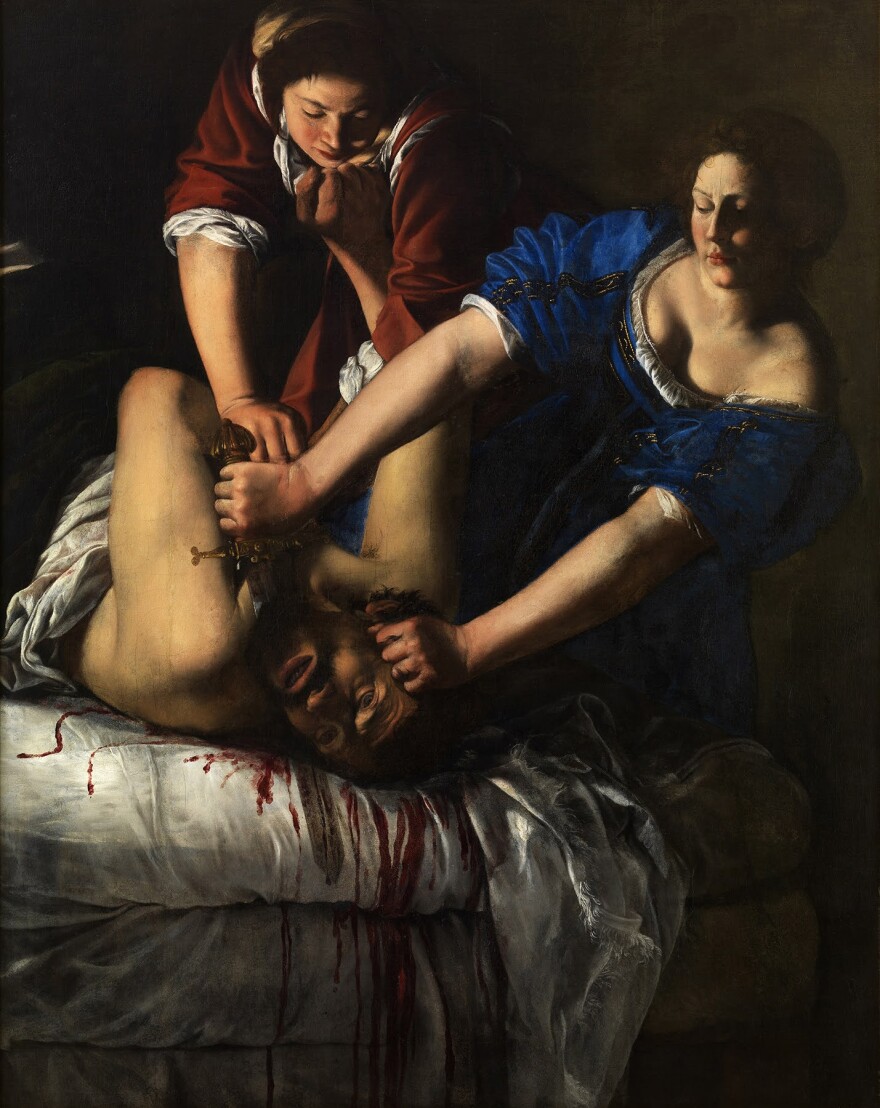Artemesia Gentileschi made hers in the 1610s. Kehinde Wiley painted his in 2012.
But both are interpretations of the same apocryphal story, of Judith and Holofernes. Set in the 6th century B.C.E., Judith, an Israelite woman, gained access to the invading Assyrian general Holofernes' private quarters. After he fell asleep, Judith and her maidservant beheaded him.
Eric Lee, director of the Kimbell Art Museum, said the exhibit is an opportunity to view these two works in conversation with one another. It's a bit of a departure for the Kimbell, which is not typically known for showcasing contemporary work.
Despite being made 400 years apart, "the strikingly different interpretations. . . reveal shared narratives and ideas," Lee said. Both touch on religion, ethnicity, and who holds power in society.
Here are some fast facts you need to know about the exhibition before your visit.
About the artist:
Kehinde Wiley is a visual artist revered for his pieces that portray Black individuals in scenery resembling classical European paintings, commonly referred to as "old master" pieces by art historians. His best known piece may be his portrait of Barack Obama, portraying the former president sitting on a chair in a sea of greenery.
About the painting:
Wiley's Judith and Holofernes gained notoriety for its pointed criticism of racism in contemporary America.
The painting depicts a Black woman holding a white woman's severed head- representative of "slaying" white dominance of art and culture.
The painting's model is Treisha Lowe, who was found by chance at a Brooklyn shopping center through Wiley's process of "street casting." Her dress was custom designed for Wiley by famed French fashion house Givenchy.
Did You Know?
Much like the painters of old, Wiley's pieces are created with the help of his personal studio artists. The studio paints the backgrounds of the pieces to the artist's specifications, then Wiley paints the figures on top of them.

About the artist:
Artemisia Gentileschi was a 17th century Italian painter. One of the few female artists of her generation, Gentileschi's paintings featured a number of powerful women in history, from Cleopatra to Judith.
Many of her pieces feature women pushing back against male oppression, influenced by her experiences as a young female artist in an incredibly male-dominated space.
About the painting:
Gentileschi's piece is a relatively traditional representation of the tale of Judith slaying Holofernes. The subject matter has long been a favorite of painters, with artists such as Caravaggio, Donatello, Gustav Klimt, and Francisco Goya crafting their own representations of the story.
Did You Know?
Some scholars have argued that Gentileschi's interpretation of Judith and Holofernes was the artist expressing her anger at the countless men who mistreated her throughout her life, including an artist who assaulted her at a young age.
A film series to accompany the exhibition, Revolutionary Painters across the Centuries: Gentileschi and Wiley, will begin in August. More information on the exhibition and the film showings can be found at the Kimbell Art Museum's website.




